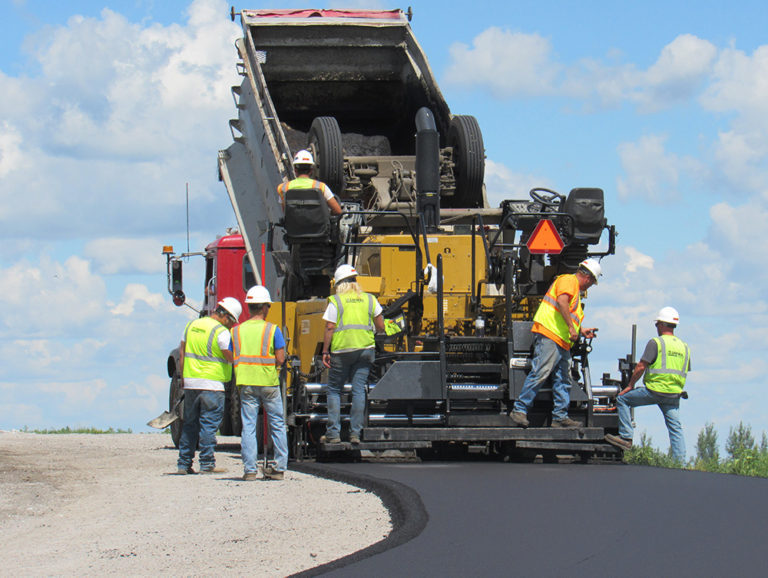It was the typical end of a workday on a construction site; no different than any other. Workers loaded up their tools and equipment, talking about their upcoming plans, perhaps discussing what was on the work agenda the next day. But one person seems unusually quiet and withdrawn, not a part of the ongoing conversations. Then, in a gesture as unlikely as a policeman giving away his badge and gun, that same worker ended his workday by uncharacteristically giving away his personal tools to his coworkers. When his coworkers checked on him later after feeling like something wasn’t quite right, they found he had committed suicide.
Michelle Brown, a construction superintendent at RK Mechanical in Denver CO, told this story to a reporter at NPR. “It was a huge sign, but we didn’t know that then,” said Brown. “We know it now.”
As a result of this tragedy five years ago, RK has taken strides to help avoid this situation from happening again by establishing 24-hour access to counseling services, lenient leave policies and crisis training for managers, among other things. But RK, as is the case with construction companies throughout the U.S., is fighting an epic battle against what are alarming statistics.
According to a recent study from the U.S. Centers for Disease Control and Prevention, more construction workers take their lives than in any other industry. The CDC report showed that the 2015 suicide rate for men in construction was four times higher than the overall suicide rate at 53 people per 100,000. Researchers found the highest suicide rates in manual laborers who work in isolation and face unsteady employment. High rates were also seen in carpenters, miners, electricians and men who work in construction. The report looked at about 22,000 of the more than 40,000 suicide deaths reported in the entire U.S. in 2015. So, why has the construction industry become a magnet for suicide, and what can be done to fight this disturbing trend?
“The construction industry is kind of a perfect storm of all the risk factors that we know contribute to suicide risk,” says Sally Spencer-Thomas, lead of the Workplace Task Force within the National Action Alliance for Suicide Prevention.
This perfect storm that Spencer-Thomas alludes to is disturbing. It’s as if there’s a suicide jigsaw puzzle, and the construction industry makes up each piece.
- Construction workers in the U.S. are predominantly white, middle-aged males, who have the highest rate of suicide among the general population.
- 38% of construction workers in the U.S. in 2018 were between ages 45 and 64; the highest suicide rate in the U.S. was among males, according to the American Foundation for Suicide Prevention.
- There is a crisis of opioid abuse by construction workers. Opioid abuse is associated with a 75% increased likelihood of a suicide attempt.
Plus, there are other factors in play; working for long stretches in remote areas away from family and friends, anxiety about where the next job is coming from (often tied into seasonal work), and so on. But the very nature of the business, a business often populated predominantly by alpha males, makes communication a problem in that those who need help may not seek it.
“The culture of risk-taking, stoicism and self-reliance in the construction industry certainly makes for courageous and hearty workers, but it also increases risk for suicide in that this occupational group is least likely to reach out when there’s a problem,” says Spencer-Thomas. “We don’t know that this is happening with a person unless we have conversations about it. There’s no X-ray, there’s no diagnostic test that tells us, the only way in is through conversation,” she says. “For construction workers to feel they can open up about it, we have to have a certain level of trust.”
How to Spot the Warning Signs
Although workers considering suicide may not express their feelings openly, there are still signals that coworkers and supervisors need to be alert to. Some of the most common are:
- workers missing more workdays than usual, often calling in sick;
- a drop-off in work performance;
- a lack of interest in their duties; and
- any abrupt or bizarre changes in their personality.
Seeing the warning signs are one thing, acting upon them is another. This is where open and frequent communication is crucial when it comes to suicide prevention:
- View employees as more than just a hired tool belt; and learn more about the person wearing the tool belt. Get to know them, especially as it concerns problems they may be having at work or at home.
- Let them know that management is tuned-in on suicide prevention and mental wellness among the workforce and they can discuss this with their supervisor.
- Keep an open-door policy.
- Support the Construction Industry Alliance for Suicide Prevention established by Construction Financial Management Association (CFMA) with the goal of providing and disseminating information and resources for suicide prevention and mental health promotion in construction.
The issue of suicide in the construction industry is “very concerning,” said Loren Sweatt, deputy assistant secretary of labor for OSHA, at a meeting of the Advisory Committee on Construction Safety and Health in Washington, D.C. “It’s a situation here at the agency where you’ll never know if you have touched the person because something bad did not happen, but I would really like to think the more information we can put out there … that we can reach the person that’s in crisis and help those folks.”
The construction industry thrives on its ability to build things. But when it comes to fighting what has become a disturbing trend among workers, it’s all about tearing things down, particularly the barriers which keep those with troubled minds and troubled hearts from openly talking about what they’re feeling, before they give their tools away.






